|
|
Gérard A. P. van den Akker a passionate Dutch lanternist from days long gone. |
| Thanks to Charles Barten for giving me a lot of useful illustrations. |
| It was long
ago, at the dawning of the 70th of the previous century, and consequently the
memory has faded. I was a starting collector and possessed only one or two magic
lanterns. I took the train to Amsterdam to visit Gérard A.P. van den
Akker who lived in the Balistraat in a real Amsterdam upstairs dwelling. His living turned out to be completely filled with magic lanterns. Cupboards, book cases, tables and even the floor were covered with magic lanterns en all kinds of attributes. Gérard showed them to me with a noticeable pleasure, told everything about them and demonstrated me how they worked. That was really delight for me! At that time I did not know much about that object and consequently almost everything he told and showed me that evening was new for me. The time flew by and when I had to leave because otherwise I should miss the last train to my home his wife Suus proposed me to stay and sleep there. I did not do that, but it illustrates the cordial way I was received there. |
|
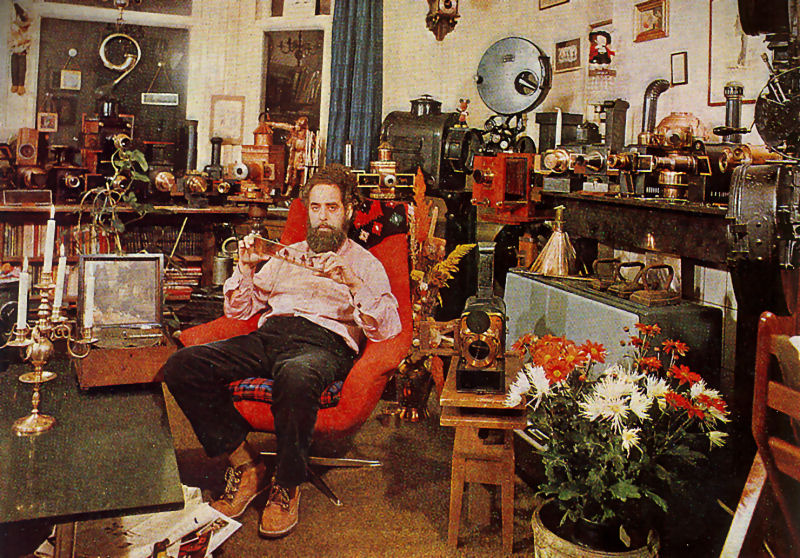 |
|
| Gérard Antoine Pierre
van den Akker was born in
Amsterdam in 1929 and worked many years as a graphical draughtsman. His first
magic lantern shows were for his little daughter. He used a magic lantern that
he got from a colleague. 'I don't like television and searched for something
that should be able to stimulate the imagination of a child. Something with a
little bit of romance.' The reason of his fascination for the magic
lantern was a visit to Peter Bonnet, the retired director of a school in the
Frisian town of Sloten, who was 73 years old at that time. Bonnet possessed an
enormous collection of magic lanterns and only a few people knew about the
existence of this. The contacts between the two men lead to the foundation of a
two-men-society and the opening of a museum in Bonnet's private house. Van den
Akker started as an 'explicator' with magic lantern shows and did this in an
authentic way to the best of his ability. |
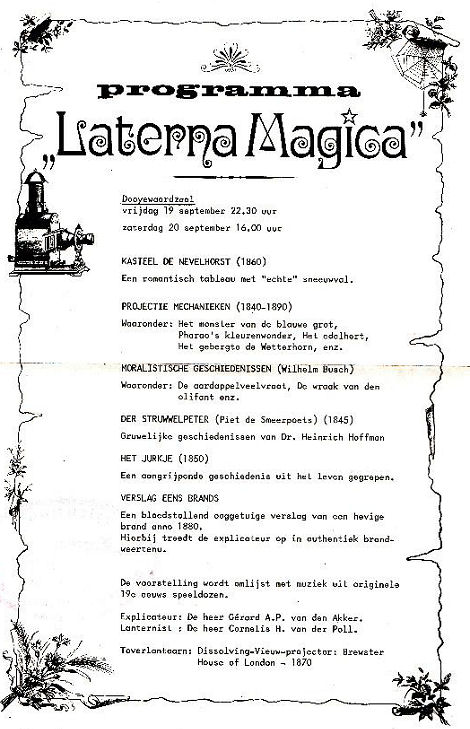 |
 |
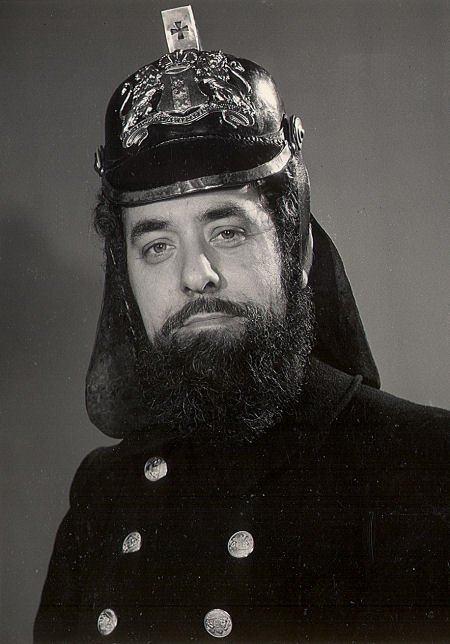 |
 |
||
| For example
he used to wrap himself in the outfit of a fireman from that time while he
showed the 'Commentary on a Fire, a bloodcurdling report of an eyewitness of an
intense fire in the year 1880'. During the show of 'Together with my uncle on
Safari, a journey through mysterious Africa and India' he wore a lightweight
suit and to make it as truthful as possible he also dealt out bananas under the
audience. |
|||
 |
The Laterna Magica
Foundation used the image of a crookled, dwarfish lanternist from 'Het Groote Tafereel der
Dwaasheid' (The Great
Theatre of Folly) as a logo. This figure that was consequently called 'a Luikerwaal'
by Gérard is styled in the book as the 'Actieuse Nacht-wind-zanger met zijn Tover Slons'
(The Night-wind singer with his Magic Lantern in action). The image shows a small windmill at the top of his cane. This represents the Dutch expression 'met molentjes lopen' (to be a little bit mad). |
||
| Initially Gérard took care of the shows all alone but from around 1972 he was assisted by Cornelis Hendrik van der Poll, who operated the double magic lantern as a lanternist while Gérard as an explicator told the matching stories. This was accompanied by an antique music box and the melancholic sound of an old gramophone. |
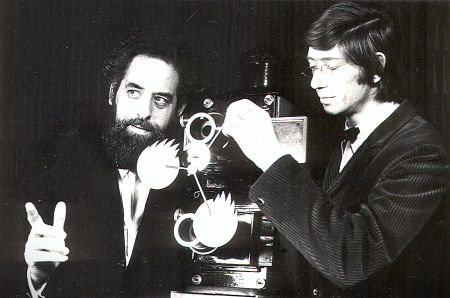 |
||
 |
|||
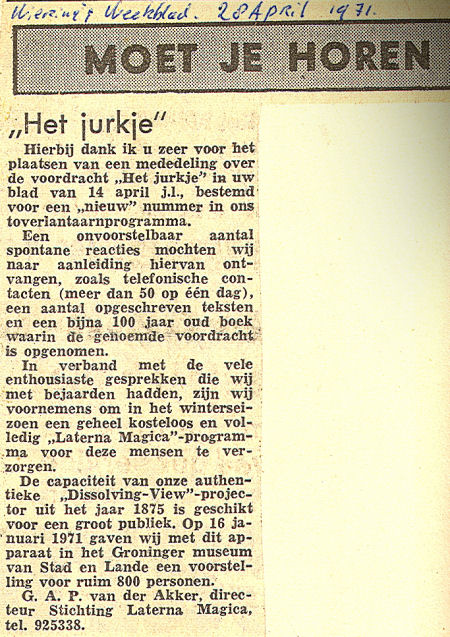 |
When Gérard
could lay hands on a set of slides from which he did not know the story that it
depicted, he sometimes made an appeal to the elder people who possible could
know about the topic, in the paper.
That was the case with 'Het
Jurkje' (The little Dress). He got a lot of telephone calls from people that
remembered the little dress, a recitation for weddings and other parties by Eugène Manuel,
translated and revised by J.L Wertheim. |
||
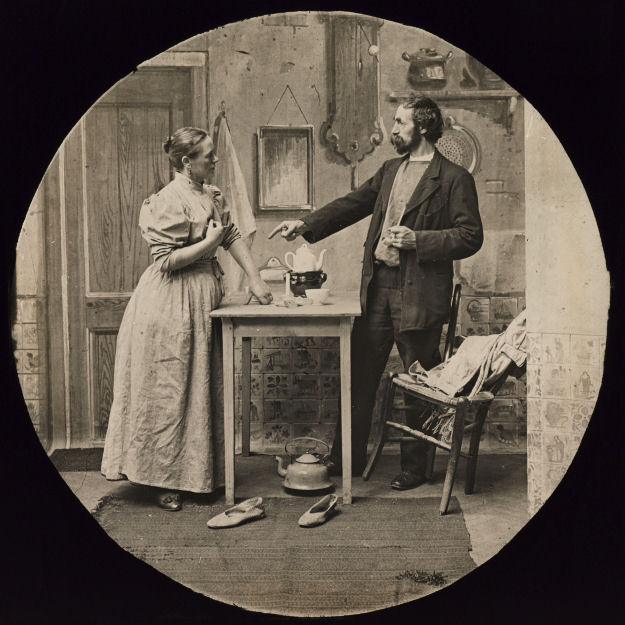 |
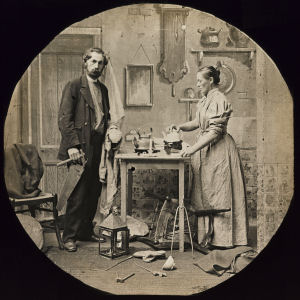 |
|
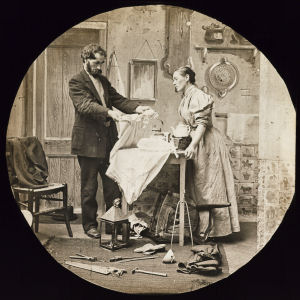 |
||
 |
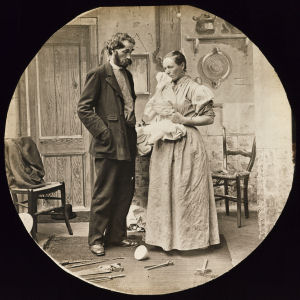 |
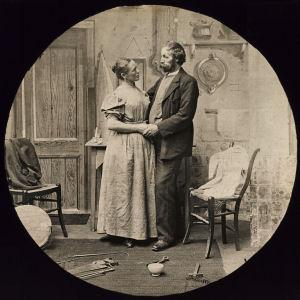 |
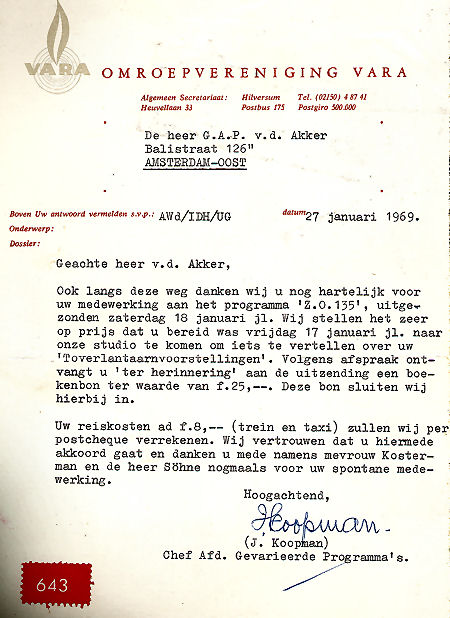 |
The Laterna Magica on television. |
 |
|
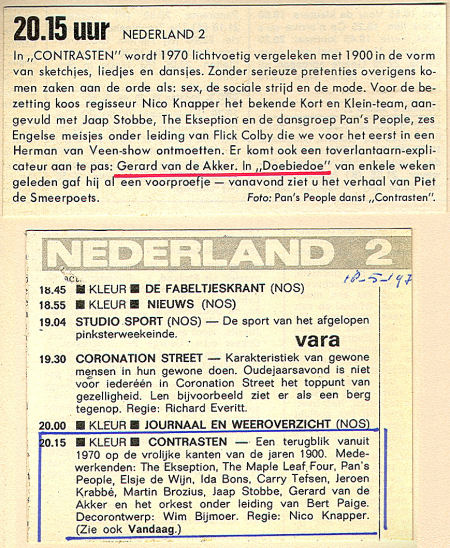 |
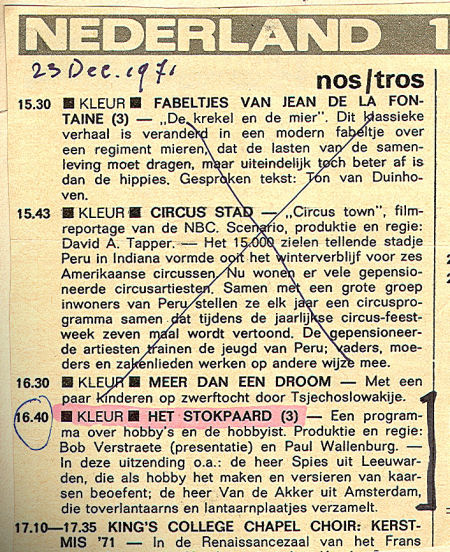 |
||
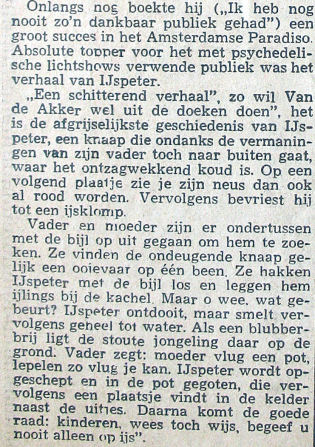 |
Magic lantern show of 'Icepeter'
in the Amsterdam Paradiso (1970). Set of 23 magic lantern slides made by Bamforth & Co. England. |
||
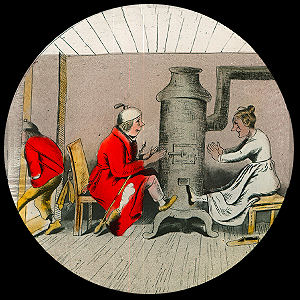 |
 |
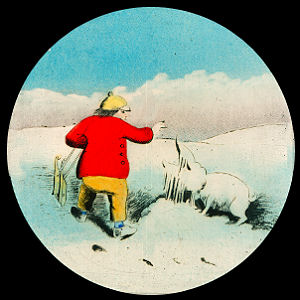 |
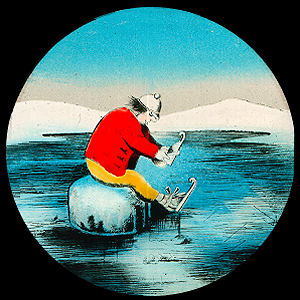 |
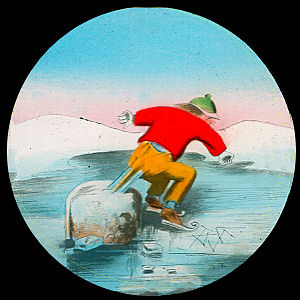 |
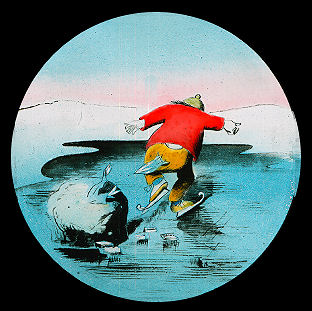 |
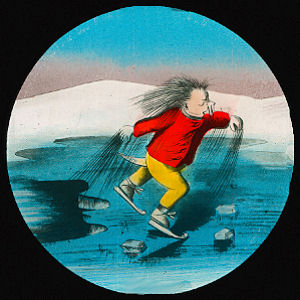 |
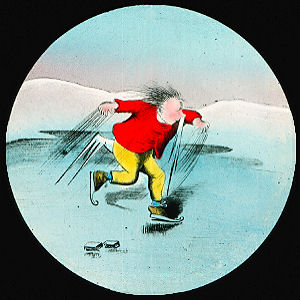 |
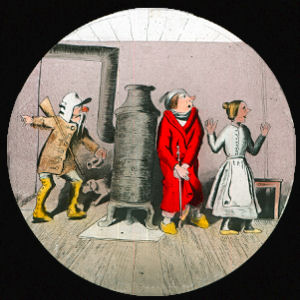 |
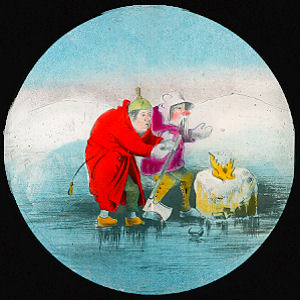 |
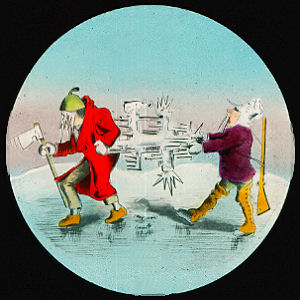 |
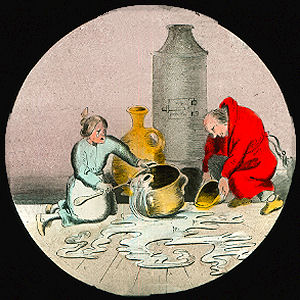 |
|
Unfortunately the slides nr 4, 9, 10, 13, 14, 16, 18, 20,
21 and 23 of this set are absent. See for another set of slides about Ice Peter the item Magic lantern slides after the famous stories of Wilhelm Busch. |
||
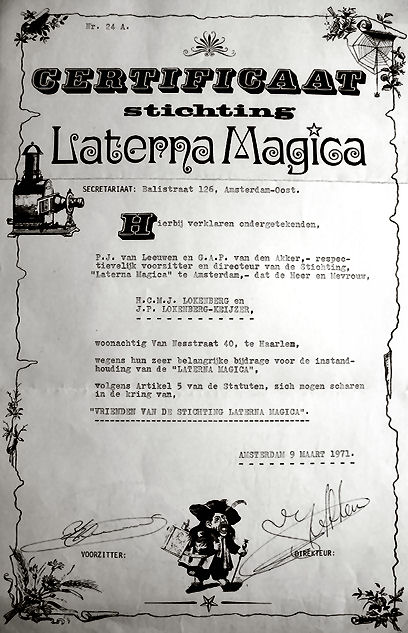 |
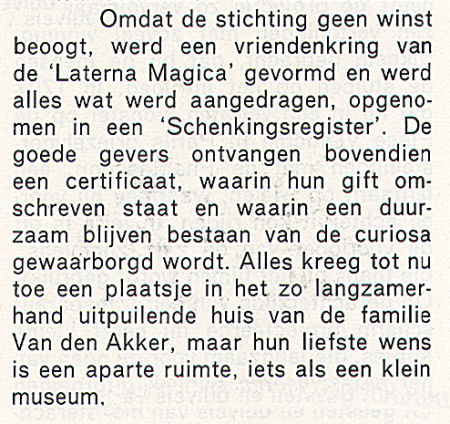 |
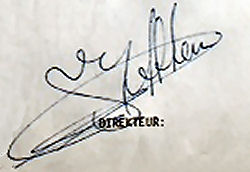 |
|
| Van den Akker was always
attracted by magic, paranormal things, the incomprehensible. In March '75
he organized a 'Burning of Witches' at the Dam in Amsterdam. He also experimented with so-called tape voices. When audiotapes are played, voices of the deceased should be heard in the recorded noise. |
 |
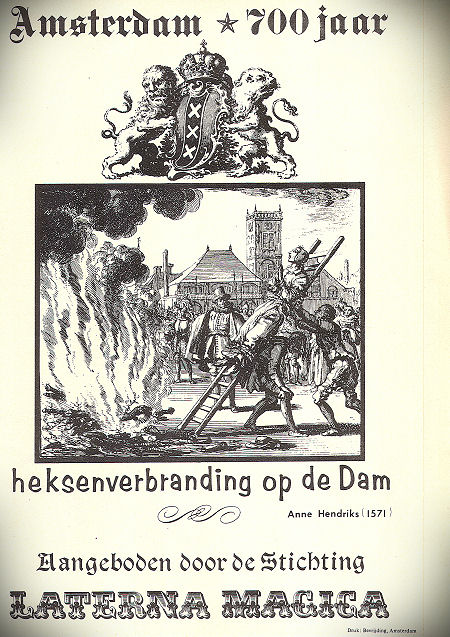 |
|
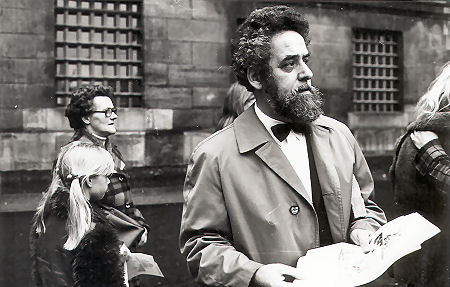 |
 |
| Gérard van den Akker was
in the 1970th one of the very first people who switched on the light in the
magic lantern again. A real pioneer. He died in 2008. |
|
|
Children, be sensible and wise, Never go alone on dangerous ice. |
|
| |
©1997-2021 'de Luikerwaal' All rights reserved. Last update: 05-06-2021. |
|